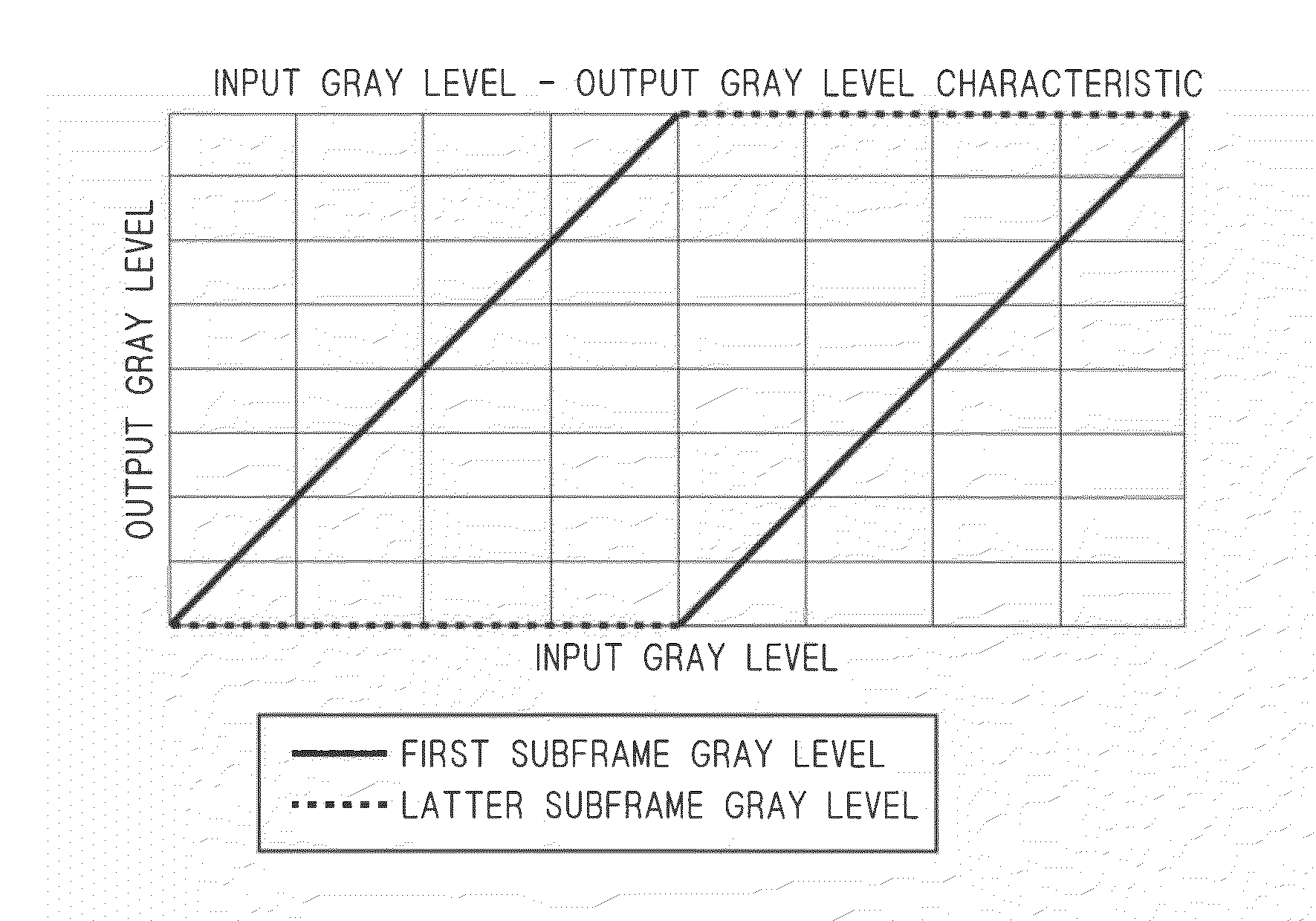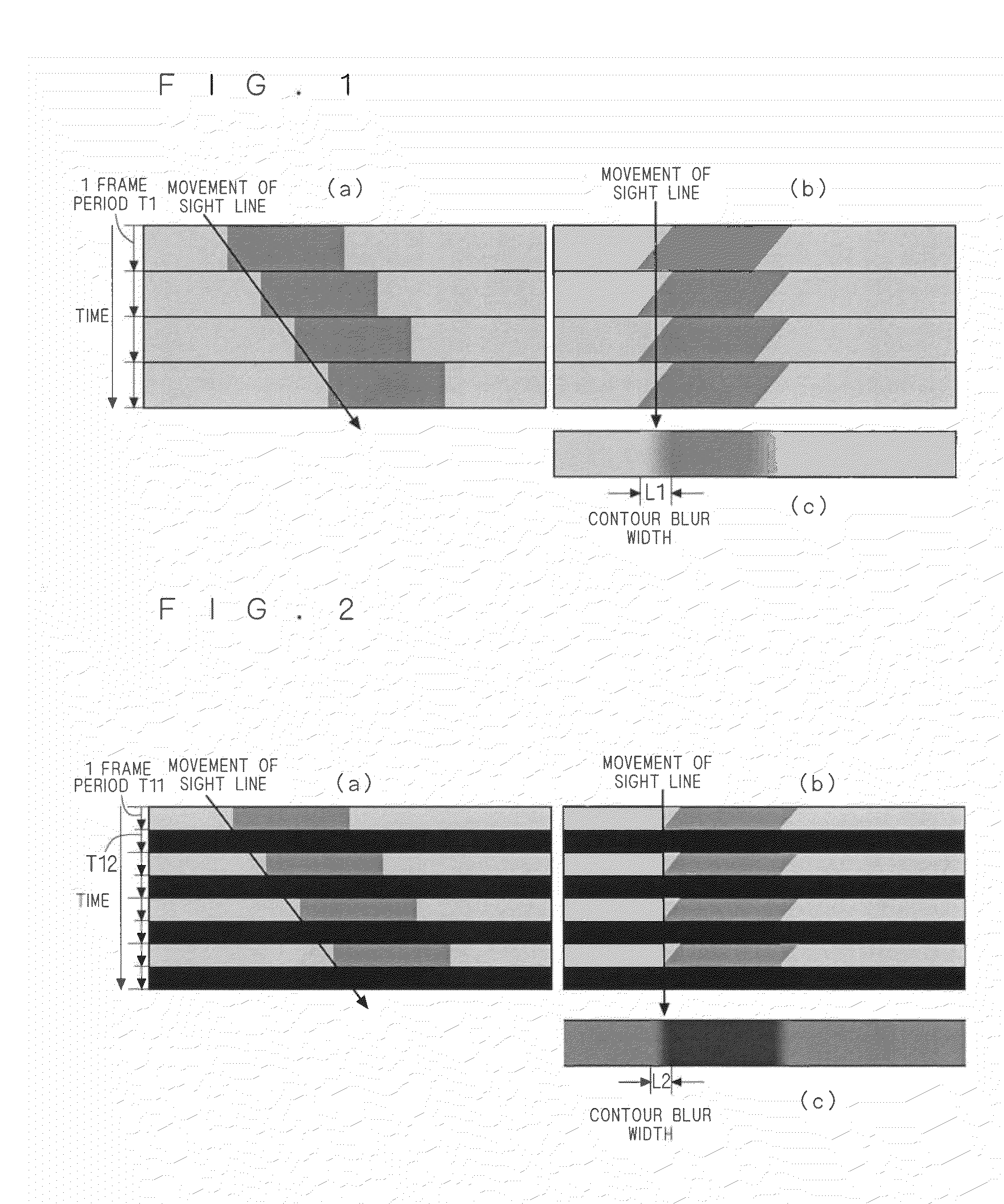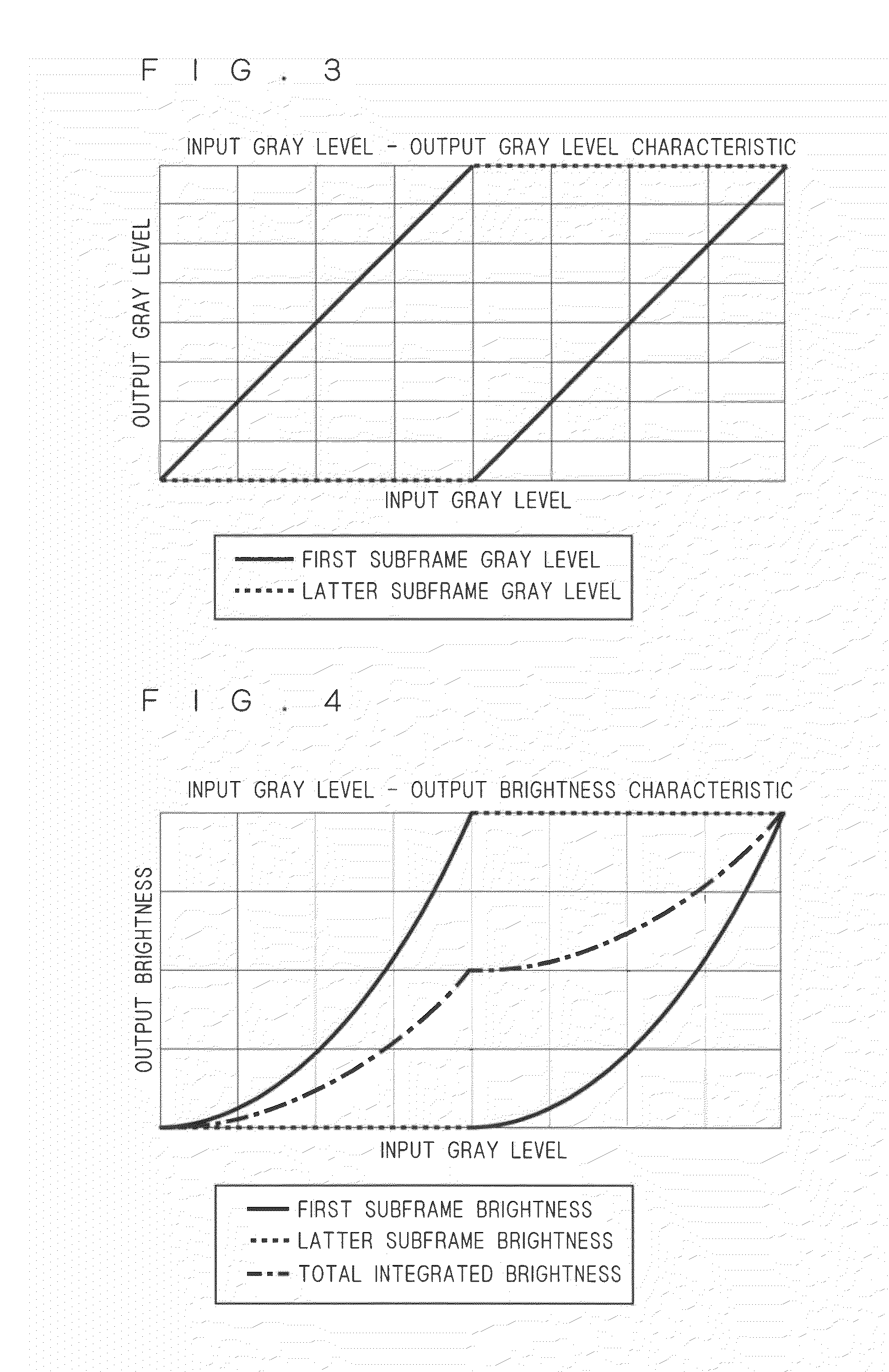Liquid crystal display
a liquid crystal display and display screen technology, applied in the field of liquid crystal displays, can solve the problems of reducing the brightness of the entire screen, blurring of borders of objects, and reducing the minimum brightness between frames, so as to solve image blur, no reduction in brightness, and no increase in power consumption
- Summary
- Abstract
- Description
- Claims
- Application Information
AI Technical Summary
Benefits of technology
Problems solved by technology
Method used
Image
Examples
first preferred embodiment
[0042]Now, a liquid crystal display according to a first preferred embodiment of the present invention will be described referring to FIGS. 8 to 14.
[0043]
[0044]FIG. 8 is a block diagram illustrating the circuit configuration of the entire liquid crystal display of the first preferred embodiment. As shown in FIG. 8, it includes a liquid crystal driving circuit (gate driver IC group) 2 for giving signals to the gate electrodes arranged in parallel to the longer sides of a rectangular liquid crystal panel 1, and a liquid crystal driving circuit (source driver IC group) 3 for giving signals to the source electrodes arranged in parallel to the shorter sides of the rectangular liquid crystal panel 1. A timing controller 4 is connected to the liquid crystal driving circuit 2 and the liquid crystal driving circuit 3 to control the liquid crystal driving circuit 2 and the liquid crystal driving circuit 3 on the basis of signal information from a data storage circuit (frame memory) 5.
[0045]FI...
PUM
 Login to View More
Login to View More Abstract
Description
Claims
Application Information
 Login to View More
Login to View More - R&D
- Intellectual Property
- Life Sciences
- Materials
- Tech Scout
- Unparalleled Data Quality
- Higher Quality Content
- 60% Fewer Hallucinations
Browse by: Latest US Patents, China's latest patents, Technical Efficacy Thesaurus, Application Domain, Technology Topic, Popular Technical Reports.
© 2025 PatSnap. All rights reserved.Legal|Privacy policy|Modern Slavery Act Transparency Statement|Sitemap|About US| Contact US: help@patsnap.com



